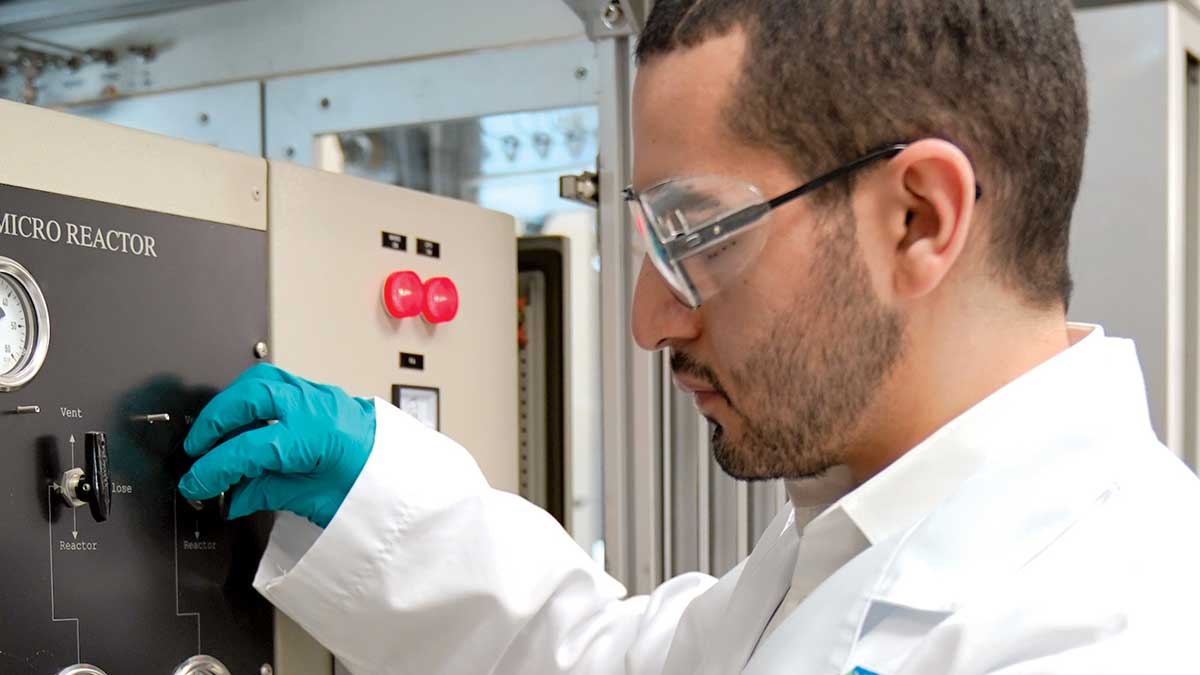Graphene Graduate
Ph.D. graduate puts graphene under the microscope

Global February 28, 2021 - By
Recently returned, Mohammed Al-Amer explores the remarkable potential of graphene at Aramco’s Research and Development Center.
“Imagine a material so thin that by all examination, it is transparent and its thickness is so small, that it’s considered two-dimensional,” Al-Amer says.
“This 2-D material is graphene — the thinnest material on Earth. It can only be seen under a microscope. Yet, it is over 200 times stronger than steel. It has extraordinary properties, including high electrical and thermal conductivity,” he says.
Graphene has captured the imagination of scientists worldwide with uses proposed in everything from brain implants to superfast computers to radically more efficient batteries. Imagine, for example, a smartphone that could be fully charged within minutes, or a graphene-based paint, an atom thick, that could stop metal from ever rusting.
The key to creating graphene, Al-Amer explains, is to effectively separate the graphene sheets from naturally occurring graphite particles. “It’s like an Oreo, two cookies sandwiched together with cream. If you pull it apart too hard, you destroy it. You want to keep the cookies intact.”
Graphene was first pulled apart, or “exfoliated,” at the University of Manchester by Andre Geim and Konstantin Novoselov. When I asked him what they had used, Al-Amer laughs. “Scotch tape,” he says. “They won the Nobel Prize in Physics in 2010.”
Al-Amer joined the R&DC in 2012 as a young research engineer. In 2015 Aramco sponsored his research into the material for his Chemical and Bimolecular Engineering doctorate.
His thesis focused on “the synthesis and fabrication of multiple carbon frameworks based on graphene,” or in layman’s terms, how to produce lots of high-quality graphene in a cost-effective way. This required him to master mind-bendingly complex fluid dynamics, which he compares to studying the flow of the ingredients of a smoothie in a blender.
Aramco’s interest in graphene stems from its potential use in hydrogen-based energy systems. It could be used as a coating for pipes and tanks, allowing for the safe storage and transport of hydrogen — a gas notoriously prone to escape. It could also be used to create ultra-efficient hydrogen fuel cells. It might also have applications in carbon capture technology.
The son of a retired Aramcon, Al-Amer is excited to be back at the company where he can put his graphene expertise to good use in developing next generation materials.
“If you have the mindset and the capital,” he says, “nothing can stop Saudi Arabia from participating in and leading the Fourth Industrial Revolution.”



